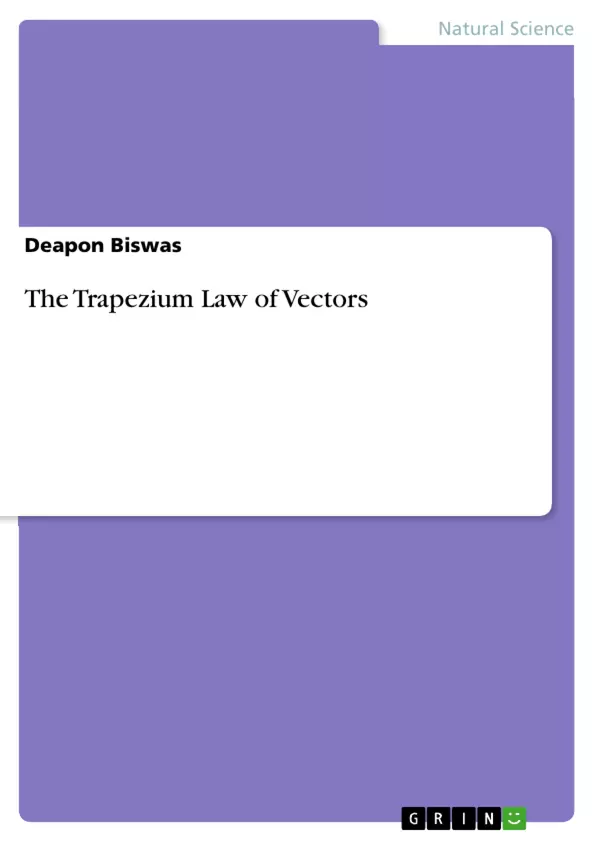We know different laws of sum of two unparallel vectors for example the triangle law and parallelogram law. Here I discuss parallel vectors and developed a law to sum parallel vectors.
Inhaltsverzeichnis (Table of Contents)
- Introduction
- Vector assembly
- Initiality, magnitude, direction of a vector
- Assembly of parallel vectors
- Resultant of vectors
- Base
- Shadow point
- Biswas' Trapezium law of vectors
- Assembly of single vector
- Step resultant vector
- Final resultant vector
- Conclusions
Zielsetzung und Themenschwerpunkte (Objectives and Key Themes)
This article aims to introduce a new law for summing parallel vectors, termed "Biswas' Trapezium Law." The author defines necessary terms related to vector assembly and parallel vectors, laying the foundation for the development of the new law.
- Vector assembly and its components
- Parallel vector assembly and its properties
- Resultant of vectors and its determination
- The concept of base and shadow points in vector analysis
- Biswas' Trapezium Law and its application to parallel vectors
Zusammenfassung der Kapitel (Chapter Summaries)
- Introduction: This chapter provides a brief overview of the article and its key objective, which is to present a novel law for summing parallel vectors. It mentions the author's discovery of the trapezium law in 1982.
- Vector assembly: This chapter defines the concept of a vector assembly as a collection of vectors, introducing notation and examples to illustrate the concept.
- Initiality, magnitude and direction of a vector: This chapter discusses the key characteristics of a vector, including its initial point, magnitude, and direction, with relevant examples and illustrations.
- Assembly of parallel vectors: This chapter defines an assembly of parallel vectors and provides examples of parallel vectors represented by directed line segments.
- Resultant of vectors: This chapter introduces the concept of a resultant vector as the sum of two vectors, illustrating the concept with diagrams and examples.
- Base: This chapter defines the concept of a base in relation to vector assembly, highlighting the joining line of initial points of multiple vectors.
- Shadow point: This chapter defines the concept of a shadow point in relation to parallel vectors, explaining how the shadow point represents the projection of a vector's terminal point on another vector.
- Biswas' Trapezium law of vectors: This chapter presents the main theorem, outlining the conditions for applying Biswas' Trapezium Law and its application to determining the resultant of two parallel vectors. The proof is presented in detail with accompanying diagrams.
Schlüsselwörter (Keywords)
The central focus of this article lies on vector assembly, parallel vectors, and the development of a new law for summing parallel vectors, known as Biswas' Trapezium Law. The article delves into concepts such as resultant vectors, base, shadow points, and their significance in understanding the newly presented law.
- Quote paper
- Deapon Biswas (Author), 2018, The Trapezium Law of Vectors, Munich, GRIN Verlag, https://www.grin.com/document/449143



